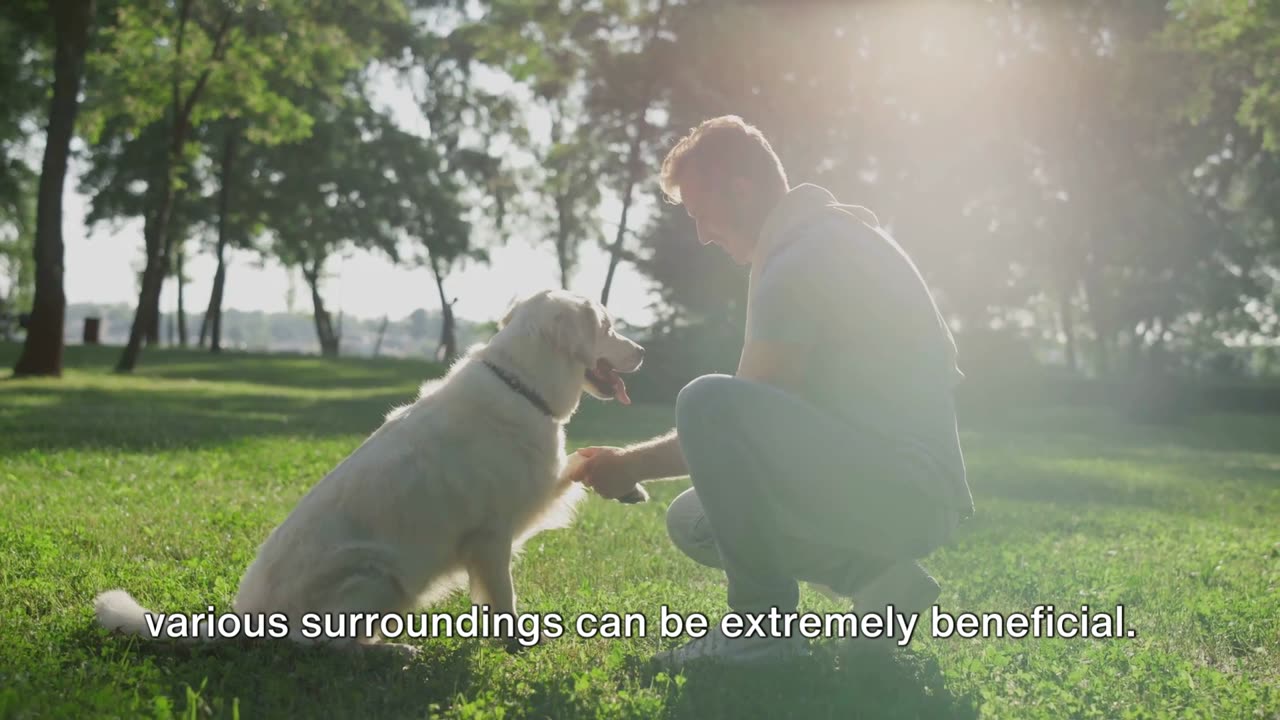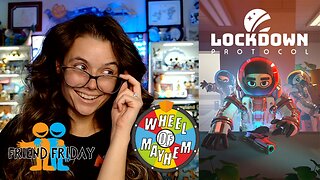Premium Only Content

Proven Techniques for Obedient dog Companions
Fundamentals of dog training techniques:
1. **Positive Reinforcement**:
- Positive reinforcement is a training technique that rewards desired behaviors with treats, praise, or toys.
- It strengthens the bond between the dog and the owner by creating a positive association with good behavior.
- This technique encourages dogs to repeat behaviors that earn rewards, making it effective for teaching commands and shaping desired behaviors.
- Positive reinforcement is based on the principles of operant conditioning, focusing on rewarding behaviors rather than punishing unwanted behaviors.
- It can be used to train dogs of all ages and breeds and is particularly effective for building confidence in shy or fearful dogs.
2. **Clicker Training**:
- Clicker training is a form of positive reinforcement that uses a small device called a clicker to mark desired behaviors.
- The clicker emits a distinct sound, signaling to the dog that they have performed the correct behavior and will receive a reward.
- Clicker training allows for precise timing, making it effective for shaping complex behaviors and capturing split-second actions.
- It helps dogs understand exactly which behavior is being rewarded, leading to faster learning and clearer communication between the dog and the trainer.
- Clicker training is widely used in obedience training, agility, and other dog sports due to its versatility and effectiveness.
3. **Marker Training**:
- Marker training is similar to clicker training but uses verbal markers such as "yes" or "good" instead of a clicker.
- Verbal markers serve the same purpose as a clicker, signaling to the dog that they have performed the correct behavior and will receive a reward.
- Marker training allows trainers to communicate with their dogs from a distance and in various environments where using a clicker may not be practical.
- It can be combined with other training techniques, such as luring and shaping, to teach complex behaviors and improve obedience.
4. **Lure and Reward**:
- Lure and reward training involves using a treat or toy to guide the dog into performing a desired behavior.
- The trainer uses the lure to attract the dog's attention and guide them into the desired position or action, such as sitting or lying down.
- Once the dog performs the desired behavior, they are rewarded with the treat or toy, reinforcing the behavior.
- Lure and reward training is effective for teaching basic obedience commands and shaping behaviors in young or inexperienced dogs.
- It should be accompanied by fading the lure gradually, so the dog learns to respond to verbal cues rather than relying on the presence of a lure.
5. **Capturing Behavior**:
- Capturing behavior involves rewarding the dog for spontaneously performing a desired behavior without any prompting from the trainer.
- The trainer observes the dog closely and rewards them immediately when they exhibit the desired behavior, such as sitting or shaking paws.
- Capturing behavior relies on timing and patience, as the trainer must be ready to reward the behavior as soon as it occurs.
- This technique is particularly effective for shaping behaviors that occur naturally and can be difficult to train using other methods.
6. **Shaping**:
- Shaping is a training technique that involves gradually molding a desired behavior by rewarding successive approximations of that behavior.
- The trainer breaks down the desired behavior into small, achievable steps and rewards the dog for each step towards the final behavior.
- Shaping requires patience and consistency, as the trainer must be able to recognize and reward small improvements in the dog's behavior.
- It is an effective technique for teaching complex behaviors, such as agility obstacles or tricks, by building upon the dog's existing skills and abilities.
7. **Desensitization and Counterconditioning**:
- Desensitization and counterconditioning are techniques used to modify a dog's emotional response to a particular stimulus, such as loud noises or strangers.
- Desensitization involves gradually exposing the dog to the stimulus at a low intensity, allowing them to become accustomed to it over time.
- Counterconditioning involves pairing the presence of the stimulus with something the dog enjoys, such as treats or play, to create a positive association.
- These techniques are often used to help dogs overcome fears, anxieties, and phobias by replacing negative emotions with positive ones.
-
 2:15:09
2:15:09
Badlands Media
18 hours agoOnlyLands Ep. 27: Power Hour Hangover, Trump’s Wartime Shift, and Portland in Flames
118K26 -
 22:21
22:21
DeVory Darkins
8 hours ago $16.90 earnedRioters attack Portland ICE Facility as Democrats make shocking admission
22.8K97 -
 2:06:06
2:06:06
TimcastIRL
10 hours agoTrump DOJ Announces INTERVENTION In Portland Over Nick Sortor Arrest | Timcast IRL
243K398 -
 6:53:58
6:53:58
SpartakusLIVE
12 hours ago#1 All-American HERO with LUSCIOUS hair and AVERAGE forehead brings Friday Night HYPE
70.4K7 -
 3:06:43
3:06:43
Laura Loomer
10 hours agoEP147: Islamic Terror EXPLODES In The West After UK Synagogue Attack
54.3K44 -
 1:02:50
1:02:50
Flyover Conservatives
15 hours agoEric Trump: America’s Most Subpoenaed Man SPEAKS OUT! | FOC Show
45.8K14 -
 3:36:44
3:36:44
PandaSub2000
1 day agoSuper Mario Galaxy 1 & 2 | ULTRA BEST AT GAMES (Original Live Version)
35K3 -
 1:26:04
1:26:04
Glenn Greenwald
14 hours agoJournalist Ken Klippenstein on Trump's New Domestic Terrorism Memo; Glenn Takes Your Questions on Bari Weiss's CBS Role, His Interview with Nick Fuentes, and More | SYSTEM UPDATE #526
102K86 -
 3:49:14
3:49:14
SynthTrax & DJ Cheezus Livestreams
2 days agoFriday Night Synthwave 80s 90s Electronica and more DJ MIX Livestream GOTH NIGHT Special Edition
58.3K6 -
 2:20:47
2:20:47
Mally_Mouse
5 days agoFriend Friday!! 🎉 - Let's Play! - Lockdown Protocol
49.9K2
